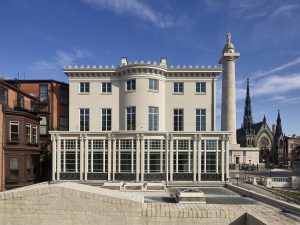 After a multi-year transformation, 1 West Mount Vernon Place — also known as the 19th-century mansion, The Hackerman House — and home to the Walters Art Museum, is now re-opened.
After a multi-year transformation, 1 West Mount Vernon Place — also known as the 19th-century mansion, The Hackerman House — and home to the Walters Art Museum, is now re-opened.
In the heart of Mount Vernon in Baltimore, the home originally served as a home during the 19th and 20th centuries, with staff maintaining and running the house. The discovery of the identity of an early enslaved servant—Sybby Grant, the Thomases’ cook— now explains how the Walters Art Museum tells the story of 1 West.
“Learning about Sybby Grant and a letter that she wrote opened up a new direction for the stories 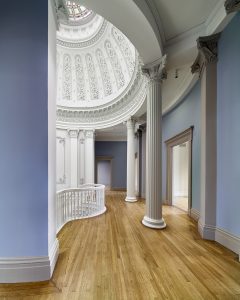 that we tell about the people associated with the house,” says Eleanor Hughes, Deputy Director for Art & Program, and curator of the 1 West project.
that we tell about the people associated with the house,” says Eleanor Hughes, Deputy Director for Art & Program, and curator of the 1 West project.
“These are the stories of the people of Baltimore and the nation,” says Hughes, “that I hope will be of interest not just to the people who know and visit the Walters, but to those who may not feel that their histories are represented in museums.”
1 West was given to the City of Baltimore in 1984 by businessman and philanthropist Willard Hackerman. Following a competition held to determine the building’s use, the house opened as part of the Walters Art Museum in 1991.
The Walters approached 1 West as a work of art in its own right, creating new experiences of the building. The $10.4 renovation project showcases the 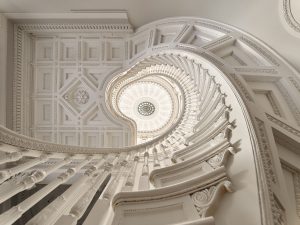 building’s striking interior features, such as the grand spiral staircase, the Tiffany stained-glass skylight, and Baccarat-style chandeliers.
building’s striking interior features, such as the grand spiral staircase, the Tiffany stained-glass skylight, and Baccarat-style chandeliers.
Nineteenth-century paintings, sculpture, and decorative arts are featured on the first floor of the house alongside new works commissioned by the Walters from acclaimed ceramicist Roberto Lugo (below, right). Lugo’s art is inspired by specific works in the Walters’ collection and reflects his experiences as an artist of color. The display in the home’s dining room includes a letter written by Sybby Grant to Dr. John Hanson Thomas during the Civil War, when he was imprisoned for his secessionist activities.
On the second floor, an installation gathers ceramics from across the Walters’ collection. It also 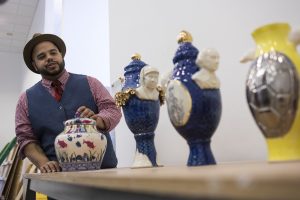 showcases a community art project, led by Baltimore ceramicist and educator Herb Massey and Jubilee Arts, that incorporates over 200 plates made by members of the Baltimore community, as well as a video installation created in collaboration with faculty and students at the Maryland Institute College of Art. Visitors can also create their own experience in Studio 1 West, a “maker space” where people of all ages can fashion and display their own works of art.
showcases a community art project, led by Baltimore ceramicist and educator Herb Massey and Jubilee Arts, that incorporates over 200 plates made by members of the Baltimore community, as well as a video installation created in collaboration with faculty and students at the Maryland Institute College of Art. Visitors can also create their own experience in Studio 1 West, a “maker space” where people of all ages can fashion and display their own works of art.
“Through extensive new research we uncovered a rich and unique assemblage of stories that reach from the early history of the United States to the present moment,” said Hughes. “While they are the stories of individuals, they resonate so strongly with broader issues and themes that we began to see the story of 1 West as a micro-history of Baltimore and the nation.”

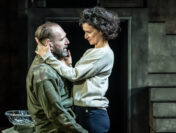
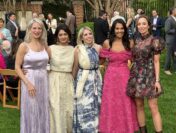
![[Vid] A Sneak Peek Inside the New Sixty Vines Foggy Bottom](http://kstreetmagazine.com/wp-content/uploads/2024/04/SV_Wine-176x133.jpg)
